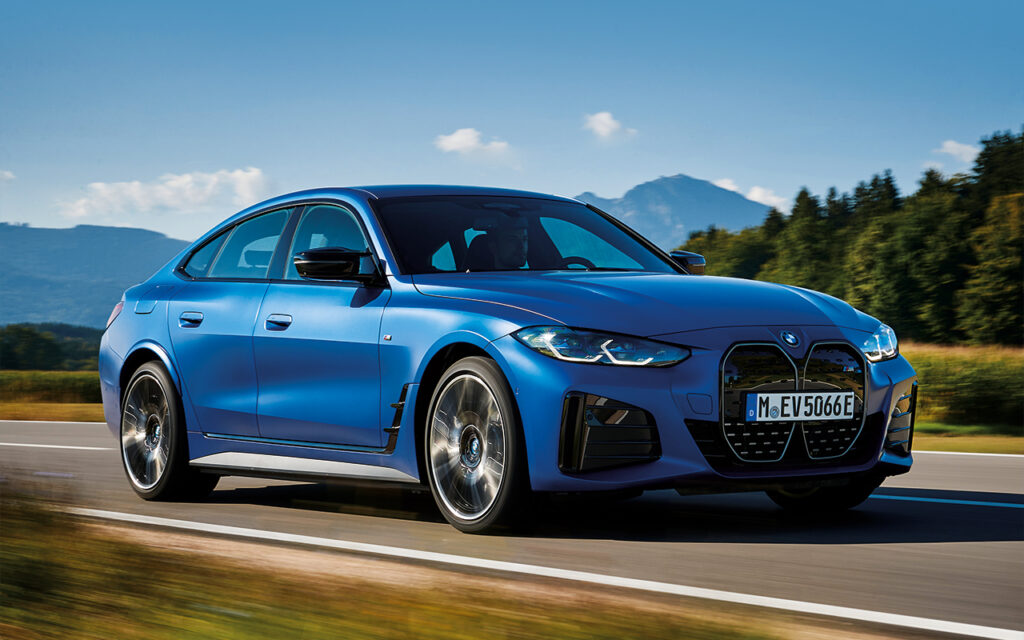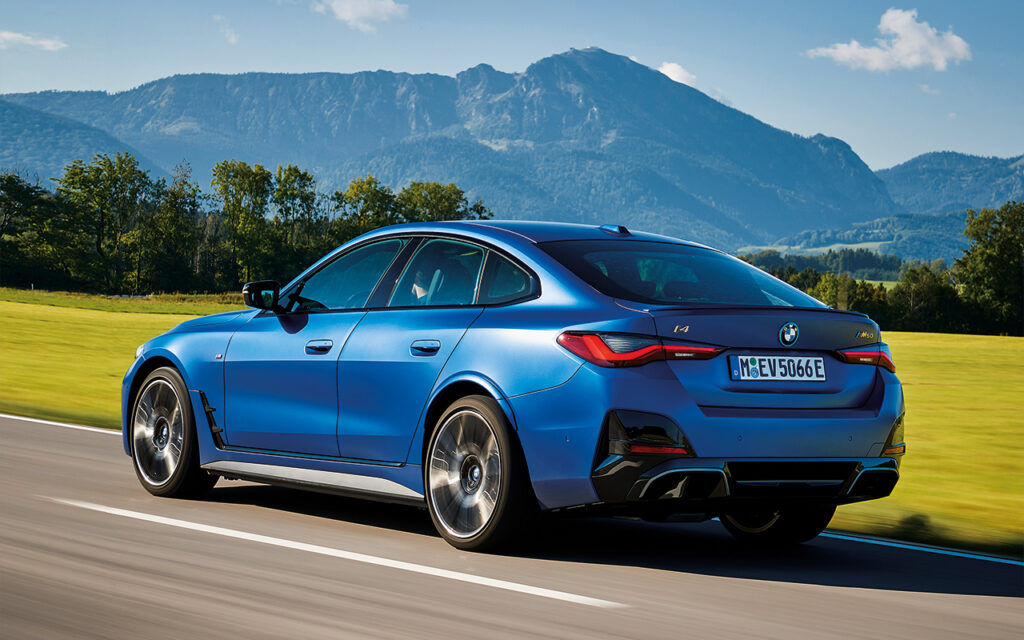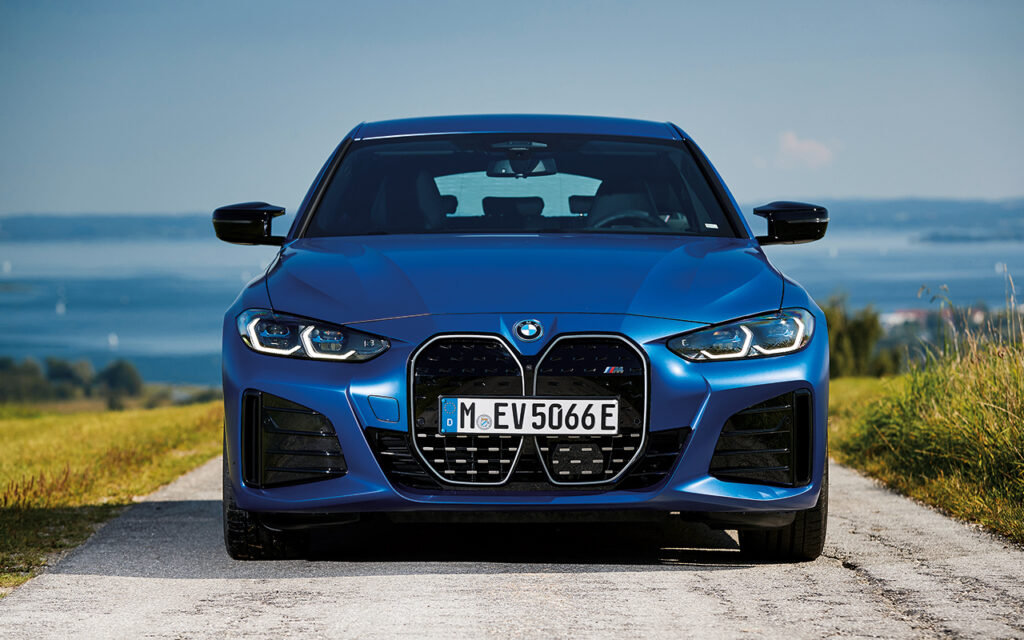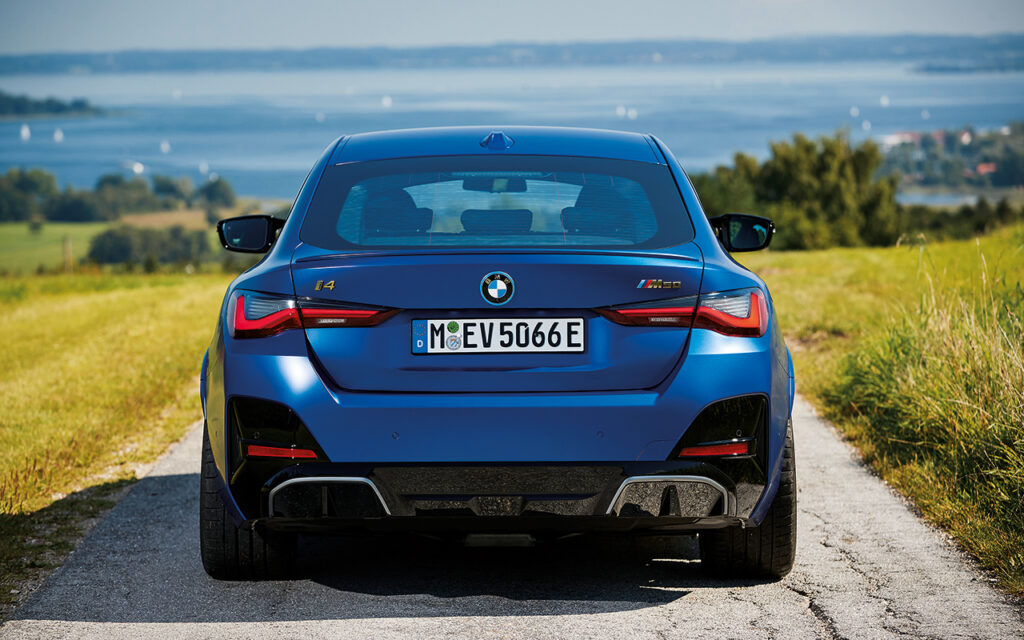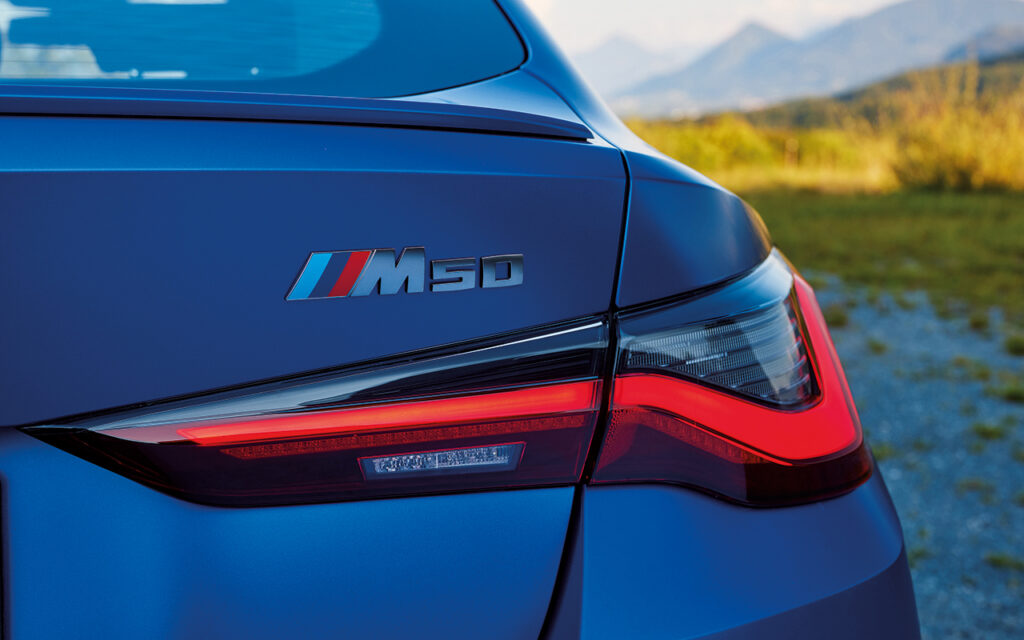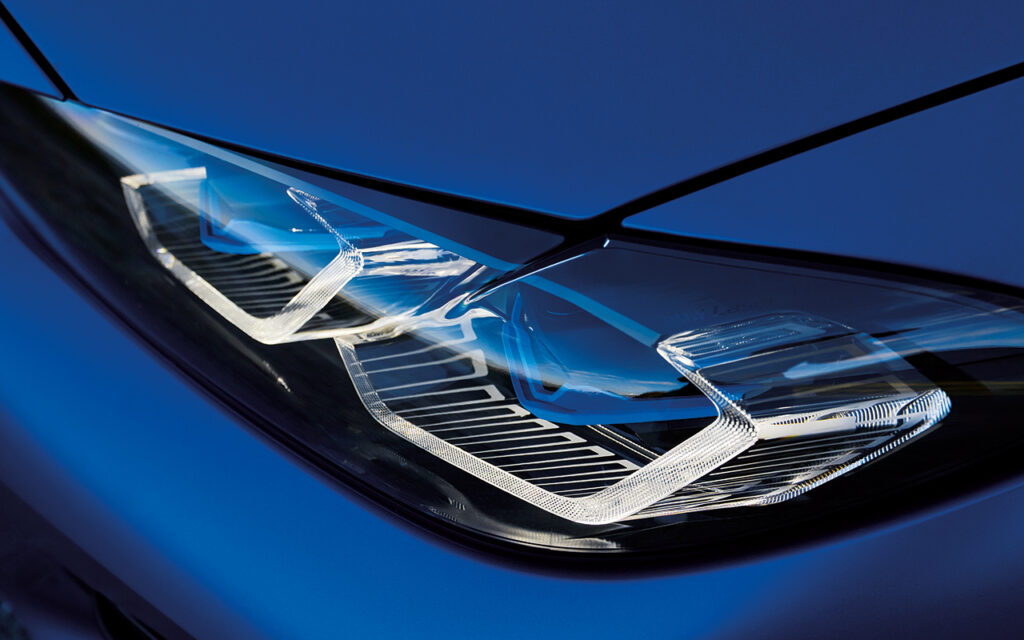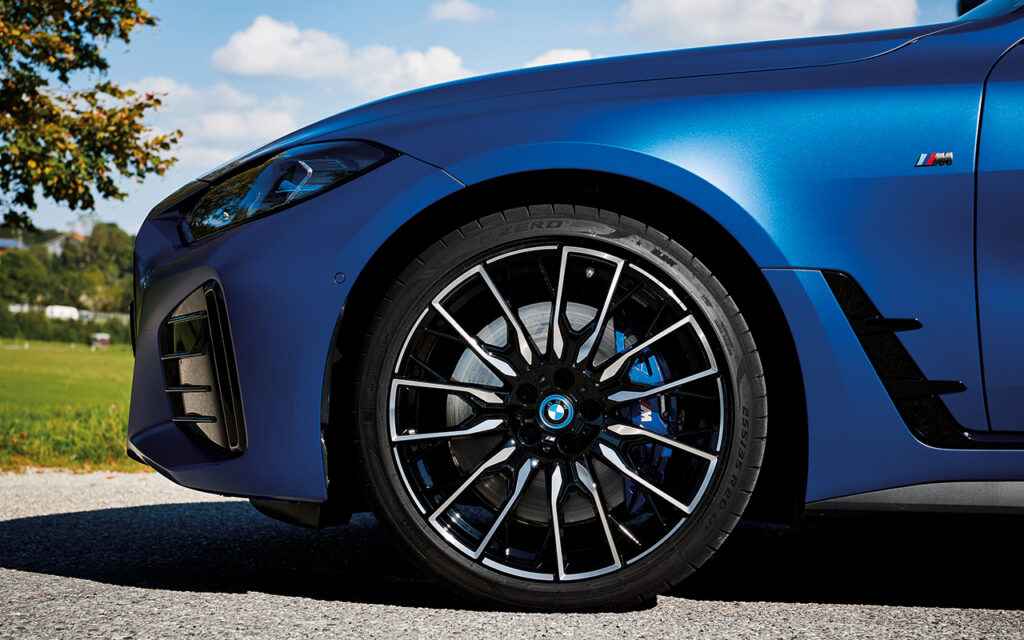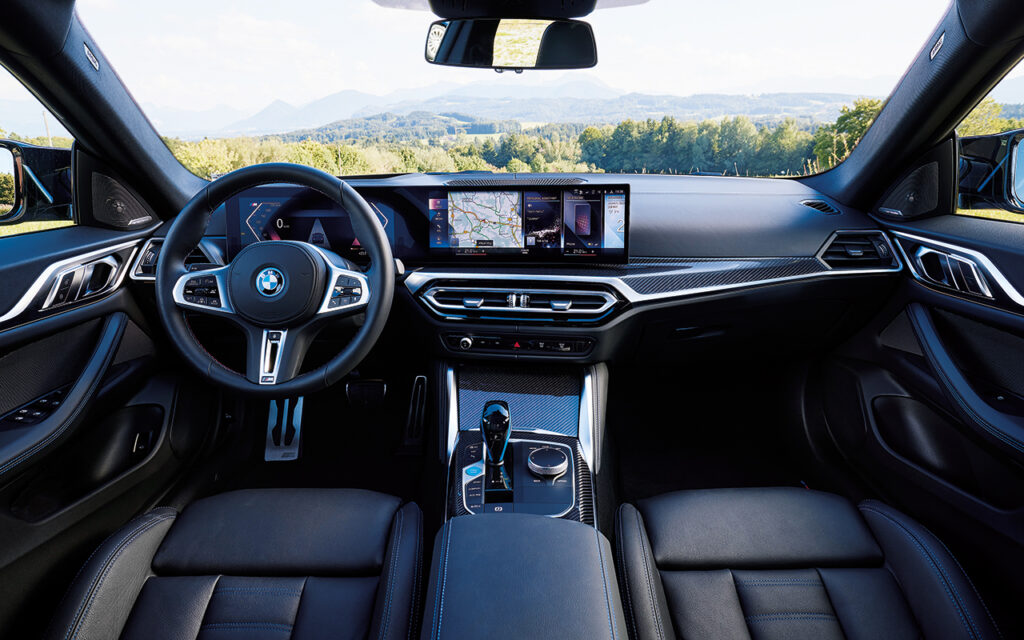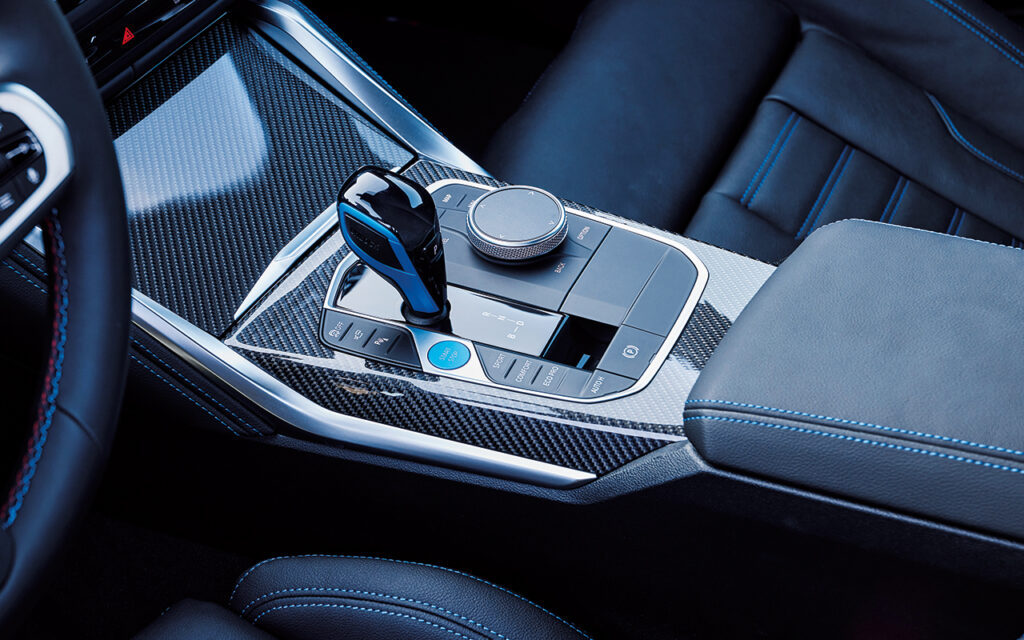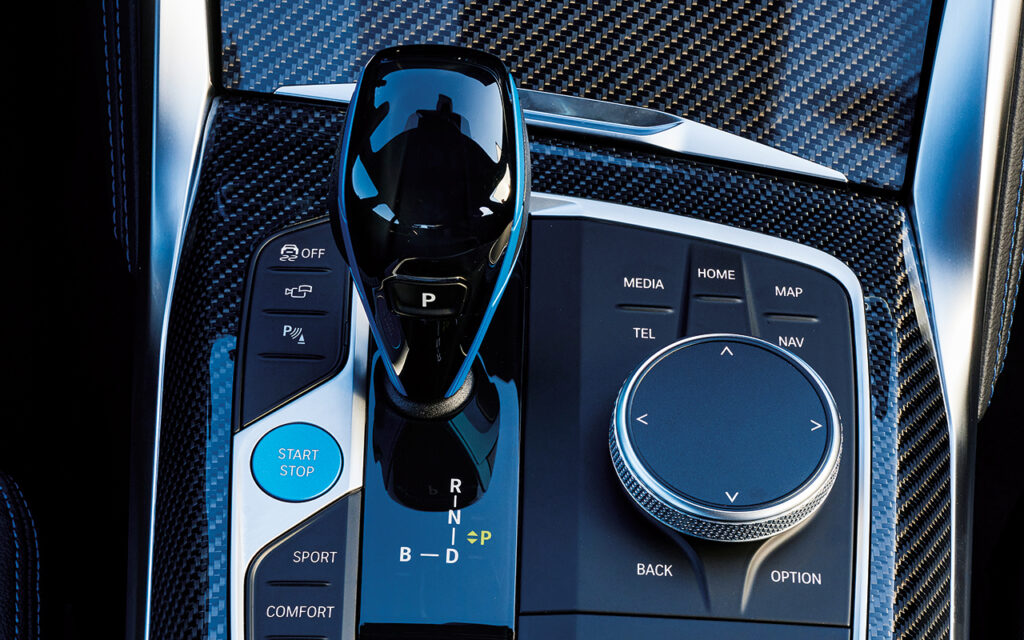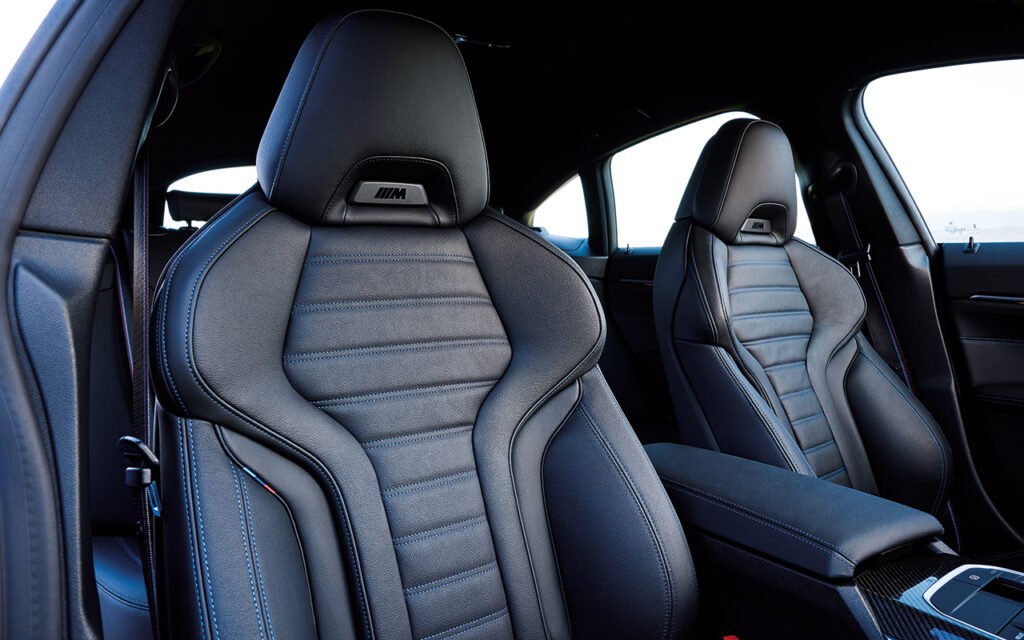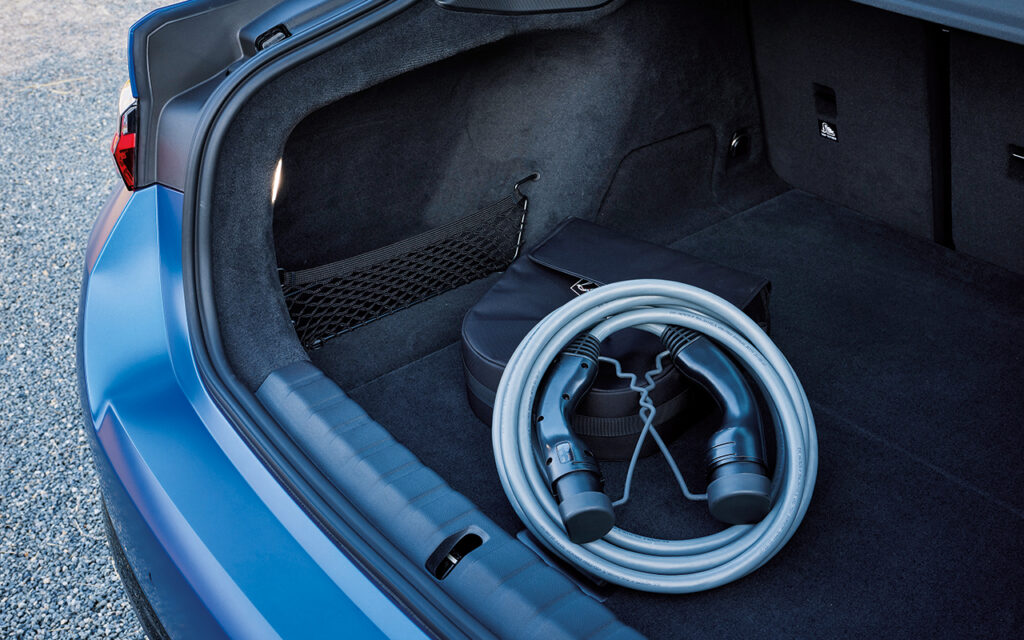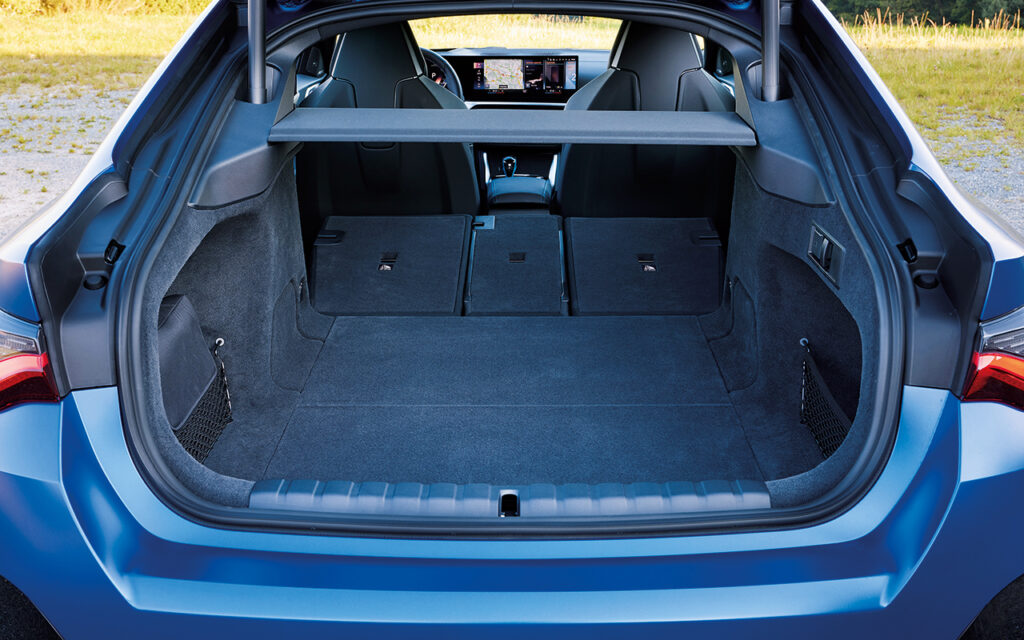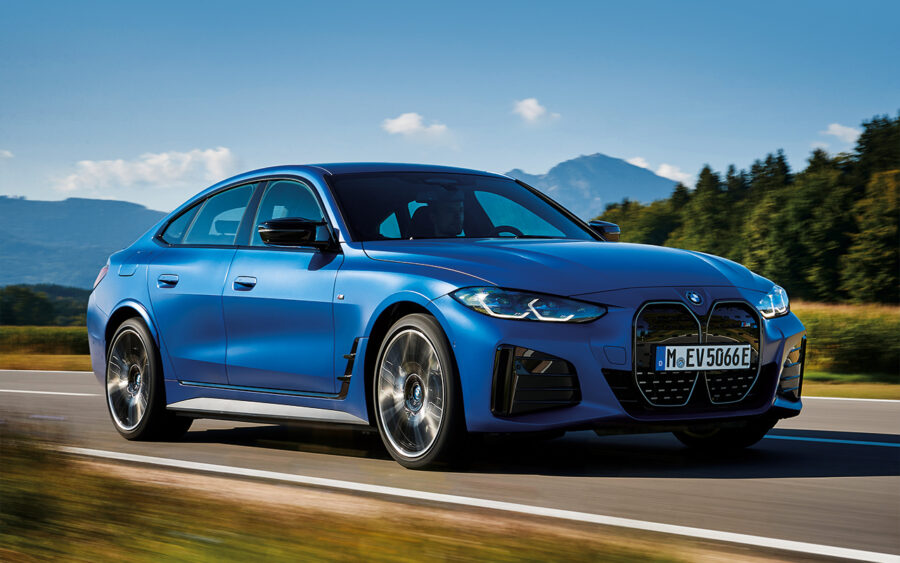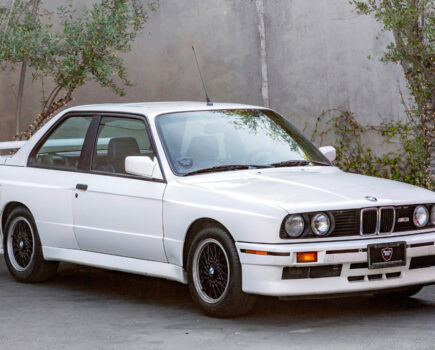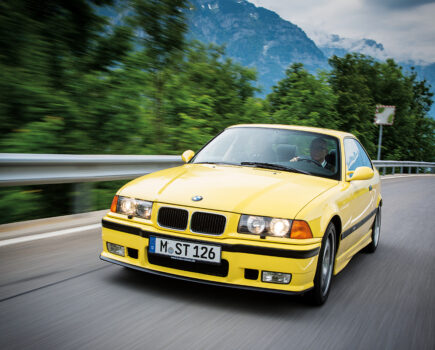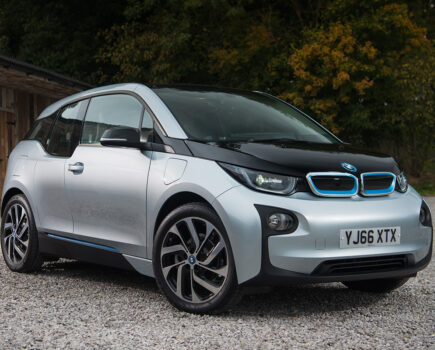The BMW i4 M50 is the brand’s first real attempt at a high-performance electric car. We get behind the wheel
Words: Shane O’Donoghue
David Alfredo Ferrufino Camacho, Project Director for the BMW i4, reveals that a discussion was had at BMW early in the development phase of the G26 4 Series family where it was decided that the new Gran Coupé would host the advent of electric power at the heart of BMW’s model range. In fact, the design of the Gran Coupé was defined according to the packaging needs of the i4 variant. Only once the size and positioning of the battery pack and electric powertrain were accommodated was the shape of the car signed off. Then work began on the regular 4 Series Gran Coupé, not the other way around, as many will assume. What’s underneath is substantially different, but the ‘top hat’ as Camacho calls it, is common between the electric and combustion-engine models.
And what a design it is. Obviously, it shares a lot with the 4 Series Coupé and Convertible, notably at the front. There, the controversial upright version of the kidney grille has been blanked off and restyled, while the front bumper has very few air openings – save for the Air Curtains that channel air past the front wheels.
Overall length is up only fifteen millimetres on the two-door 4 Series Coupé, with a wheelbase increase of just five millimetres, but you’d swear it’s more, as the i4 looks longer and more elegant somehow. An increase in overall height has been used to reprofile the roof and accommodate an extra set of doors, and actually, we think it makes a better job of incorporating muscular rear haunches, where the Coupé can look a little heavy-handed from some angles.
The i4 gets unique flush door handles and an air breather detail aft of the front wheels that is neatly integrated with the side sills, along with its own design of alloy wheels optimised for aerodynamic efficiency. At the rear, with no exhaust outlets, BMW’s designers took the opportunity to restyle the bumper to also optimise the aerodynamics. The regular 4 Series LED lights are fitted, and they suit this shape well.
Pictured here is the top-of-the-range i4 M50, as tested at the international launch in Germany. Its design is enhanced with more aggressive looking bumpers, Cerium Grey and High-gloss Black detailing in certain places, a set of 20-inch alloy wheels (19s are standard n the UK) and a neat little lip spoiler at the rear. The Frozen Portimao Blue metallic paint does it no harm either, but it costs an eye-watering £2,985. Interestingly, the i4 doesn’t get the suggestive little wheelarch extensions at the rear shown here unless you go for the 20-inch wheels. I wouldn’t want the car without them.
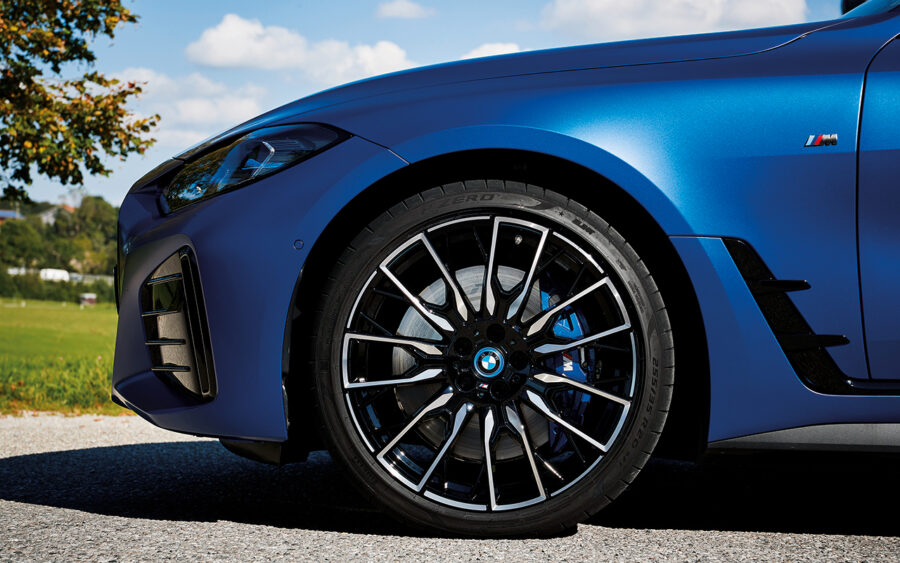
A glance at the technical specifications of this car indicates that it will live up to such visual presence. There’s an electric motor on each axle, supplying up to 544hp and 586lb ft of torque for a start. Those are huge numbers. By way of reminder, the M4 Competition’s engine produces 510hp and 479lb ft. Sure, the i4 M50 weighs a lot more – at 2290kg – but still, it should be of no surprise that the 0-62mph time is dispatched in an M4-equalling 3.9-seconds.
The inherent all-wheel-drive traction is augmented by BMW’s clever ‘near-actuator wheel slip limitation’ feature first developed for the i3s, while launch control shows off the advantage of maximum torque from a standstill produced by electric motors – if you’ve selected the Sport Boost driving mode. It’s astoundingly quick in a straight line and all too easy (on derestricted German autobahn) to hit the limited top speed of 140mph.
Amusingly, this is all accompanied by a raucous digital sound inside the cabin that rises – somewhat alarmingly – in intensity, in line with the acceleration. The sound profile changes with the driving modes, so it’s relatively unobtrusive in the default Comfort setting, and arguably too loud in the Sport mode. We found it entertaining to start with, but then quite annoying on a long journey, though the way it mimics the burble of a powerful petrol engine on the overrun is actually enjoyable. There’s a lot of customisation in the system available, thankfully.
Despite the electric powertrain and all the new features to get used to, the interior of the i4 is relatively conventional – to a point. It gets the same seating layout as the rest of the 4 Series line-up and mostly the same centre console, too. Blue accents on the shift lever, steering wheel and start button catch your eye, but the biggest difference is found on the dashboard, as the i4 gets the same new curved glass display design that debuted on the iX model.
In front of the driver is a 12.3-inch screen for the instruments and to the side is a massive 14.9-inch touchscreen, angled towards the driver. Thanks to anti-reflective glass, it looks good even in bright sunshine, and the graphics are crisp. Powering it all is BMW Operating System 8, which will eventually roll out to all future BMWs. It focuses on customisation and connectivity, with 5G technology built in. Remote software upgrades and even the option to purchase some functions on demand are included.
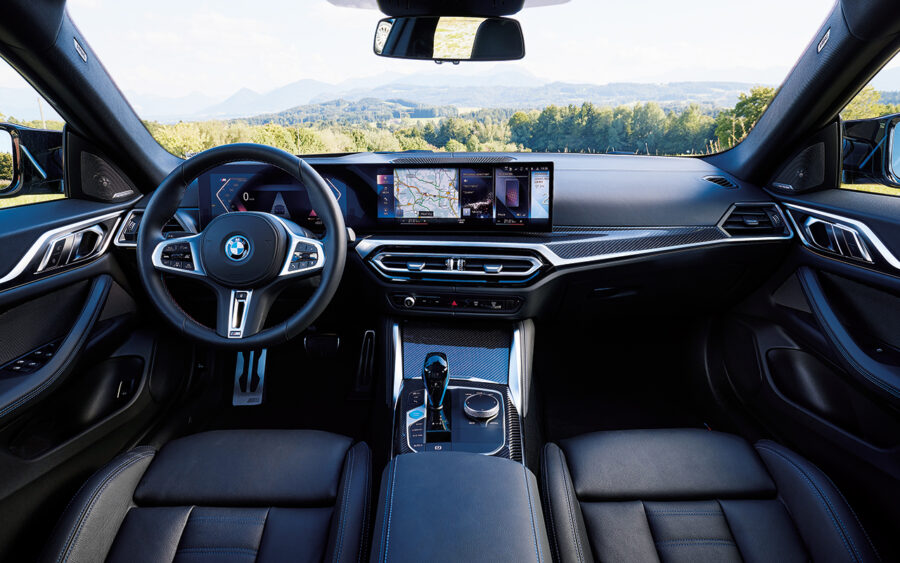
Integration with Apple CarPlay and Android Auto is at a high level. For example, the directions and display from the smartphones’ navigation can be shown within the instrumentation – and even on the head-up display system. While the voice control system has been further improved, and the touchscreen itself is easy and quick to use, we’re glad to report that the rotary iDrive controller in the middle of the car is still the perfect interface when on the move.
Though the front doors are shorter than in the 4 Series Coupé, the front cabin feels largely the same. Big people may find the rear door aperture a little tight for comfort, but once in, there’s acceptable space in the outer two seats for adults. There are three seatbelts, but the raised centre seat clearly is only for occasional use, and whoever sits there has to contend with a chunky transmission tunnel. The seatbacks split and fold to create a long flat floor if the standard 470-litres of boot space isn’t sufficient.
Back in the driver’s seat, it’s easy to get comfortable with loads of adjustment of the sports seat and steering wheel. Press the blue button to start it up and you’re greeted with a unique electronic sound to tell you the car is ready to go. Otherwise, there’s remarkably little to be getting used to. The driving modes buttons are Sport, Comfort and Eco Pro as usual, for example and the drive selector appears standard.
It does, admittedly, have a new ‘B’ option, which allows the driver to enhance the regenerative braking effect. The electric motors can also act as electricity generators when the car is decelerating, but not everyone likes the strong deceleration effect, so it’s relatively light by default. Choose B – instead of D for drive – and the effect is strengthened, meaning you barely need to touch the brake pedal at all in busy traffic if you’re paying attention.
The i4 comes as standard with a new form of the integrated braking system that debuted in the current M8, now redeveloped for an electric vehicle. It saves weight and complexity, but it’s also designed to offer consistent brake pedal feel, whether the deceleration is induced by regenerative braking or by the hydraulic circuit. It works well enough, braking power is strong and we didn’t really notice that the pedal felt any different than in any other BMW.
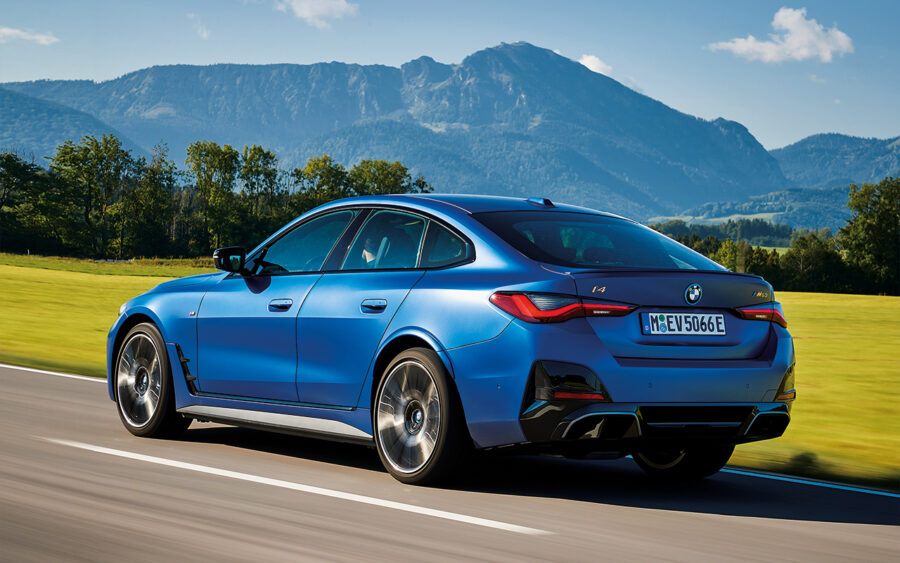
Likewise with the steering. The i4 M50 gets a variable ratio system as standard, which helps with manoeuvrability at low speeds and through tight corners, while preventing any nervousness at a faster pace. It’s well-weighted, as well, helping to disguise the car’s mass when entering a bend, but not seemingly at the expense of some feedback. The low centre of gravity (34mm lower than that of a 3 Series, apparently) helps offset the disadvantage of the extra weight through a sequence of quick direction changes, where the i4 really flows.
This model comes with adaptive M suspension as standard, too, though, even on the 20-inch rims and in its sportiest setting, it never felt too firm or rigid for road use. That’s the key difference between an M Performance Vehicle and a full-on M car, perhaps. Likewise, while incredibly fast and accomplished through the corners, the i4 M50 never feels as edgy or challenging as an M4 can. It’s more polished than that, making swift progress without making a fuss. That doesn’t mean it’s no fun, but we can’t see many owners taking this car on track, for example. It has clearly been designed for road use, first and foremost.
The thing is, despite the looks and M badge, this car would make a great daily driver. It’s smooth and quiet and comfortable when you want it to be. The electric powertrain is superb, too. The usable energy capacity of the battery pack is quoted as 80.7kWh, while the range possible on a charge is up to 318-miles – depending on specification. Naturally, that will also depend on how and where you drive it. For the record, despite considerably above average speeds, we saw an average energy consumption figure of about 2.8-miles per kWh. That would suggest a range of about 250 miles, though driven more gently it should go much further.
Electric cars make most sense if you can charge them up at home overnight, but if you do have to use the public charging network in the i4 M50, it can do so at up to 205kW at a suitable rapid charger, which means a 10-80 per cent charge in approximately 31-minutes.
In terms of pricing, the i4 M50 isn’t cheap, starting at £63,905. That makes it considerably more expensive than any other 4 Series Gran Coupé, but then again, there’s no doubting its position in the line-up, surpassing the M440i xDrive variant in terms of performance. A little more affordable is the entry-level, rear-drive i4 eDrive40, from £51,905, which is hardly a slouch with 340hp. It gets the same battery pack, too, resulting in a longer range as it’s a lighter car.
If an electric BMW is on your agenda, there’s no doubt that the i4 will make the transition an easy one. It’s a polished creation that looks, feels and drives like a BMW should. The M50 in particular is a serious performance car, regardless of what powers it.
